YOGA PIONEERS : 10 MASTERS TRANSFORMED A MILLENNIAL PRACTICE
Since its origins in ancient India , yoga has survived the centuries, evolving without ever losing its spiritual essence. This post pays tribute to the ten pioneers of yoga, these masters who knew how to transmit, transform, and adapt this ancient discipline to modern needs. Discover the emblematic figures who shaped yoga as we practice it today.
Written by Valentine - February 2025
Collapsible content
Reading time
About 10 minutes
WHAT YOU ARE ABOUT TO DISCOVER
- The fascinating story of 10 pioneers who profoundly influenced yoga, from its spiritual origins to contemporary practices.
- The unique contributions of each master , from founding texts to modern teaching methods.
- How these figures have adapted ancestral traditions to the needs of today's practitioners, in the West as well as in the East.
- The lasting impact of these masters on the global popularity of yoga and its integration into modern wellness.
- The key teachings of each figure and their influence on current yoga styles, from Hatha Yoga to Transcendental Meditation.
- "Let's take a look"!
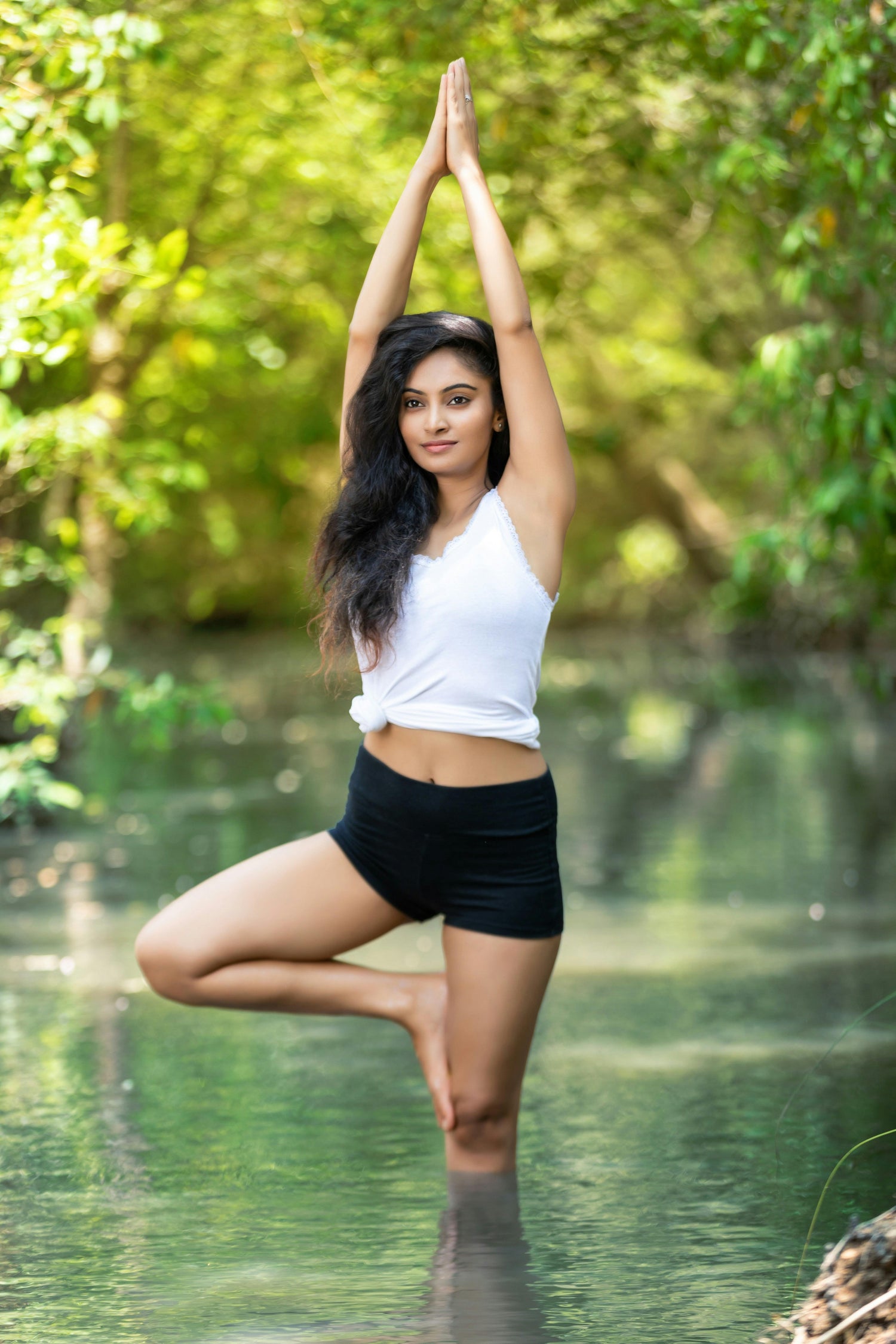
THE PIONEERS OF YOGA: LEGACIES OF A UNIVERSAL PRACTICE
Yoga, as we know it today, is the fruit of a rich and profound heritage, shaped by visionary masters who adapted and spread this ancient practice throughout the world. These pioneers not only transformed yoga into a modern discipline accessible to all, but they also respected its spiritual and philosophical essence.
The Philosophical Roots of Yoga
It all begins with Patanjali , the author of the Yoga Sutras , the true philosophical foundation of yoga. Through his 196 aphorisms , he structured a path to spiritual liberation, establishing the eight branches of yoga ( Ashtanga Yoga ) that still serve as a guide for millions of practitioners today.
The Masters of Modernization
In the 20th century, figures such as Swami Vivekananda and Paramahansa Yogananda helped introduce spiritual yoga to the West. Vivekananda, by introducing Raja Yoga at the Parliament of Religions in 1893, laid the first foundations for a bridge between East and West. Yogananda, with his iconic work "Autobiography of a Yogi," paved the way for meditation and spiritual development worldwide.
The builders of modern yoga
The 20th century also saw the emergence of key figures in the physical practice of yoga:
- Tirumalai Krishnamacharya , often considered the father of modern yoga , trained renowned students, such as BKS Iyengar (founder of alignment-oriented yoga), Pattabhi Jois (creator of dynamic Ashtanga Yoga ) and TKV Desikachar (pioneer of therapeutic Viniyoga ).
- Swami Sivananda , for his part, democratized a holistic and compassionate approach to yoga throughout the world, advocating simplicity and selfless service.
The Female Voices of Western Yoga
Indra Devi , the first Western woman to be trained by Krishnamacharya, played a major role in the spread of yoga in the United States. She made the practice accessible to a wide audience, particularly women and Hollywood celebrities.
A tradition adapted to the modern era
Each of these pioneers brought their own vision of yoga:
- Iyengar emphasized precision of postures and the use of props to make yoga accessible to all.
- Pattabhi Jois introduced a dynamic and demanding practice with Ashtanga Yoga .
- Desikachar advocated therapeutic yoga tailored to individual needs.
A living legacy
Today, yoga is practiced by millions of people around the world, thanks to these legendary figures. Whether approached as a physical discipline, a spiritual path, or a therapeutic tool, modern yoga remains deeply rooted in the teachings of these masters.
Their legacy of wisdom, discipline and innovation continues to guide practitioners in their quest for balance, harmony and self-knowledge.
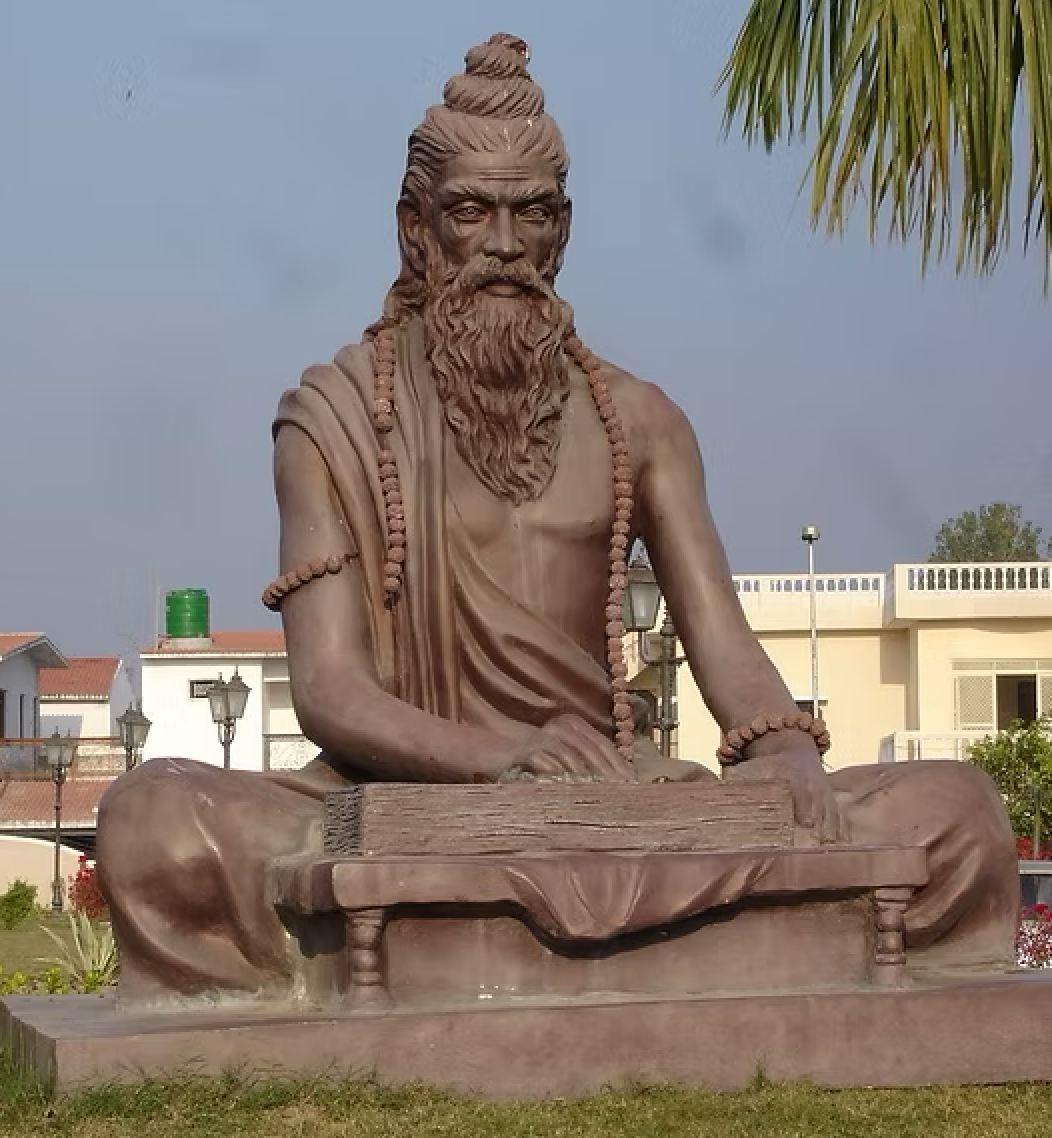
PATANJALI (2nd century BC): THE FOUNDING FATHER OF CLASSICAL YOGA
Patanjali 's name is almost synonymous with the philosophical roots of yoga. Although few details are known about his life, his influence on the modern practice of yoga is immense and undeniable. He is considered the author of the Yoga Sutras , a collection of aphorisms that clearly and concisely structure the fundamental principles of yoga. This text, still taught today, is the cornerstone of yogic philosophy.
The Yoga Sūtras consist of 196 short and precise aphorisms, divided into four chapters:
- Samadhi Pada (the state of deep concentration)
- Sadhana Pada (practice and discipline)
- Vibhuti Pada (spiritual powers)
- Kaivalya Pada (liberation or spiritual emancipation)
Patanjali develops the eight branches of yoga (Ashtanga Yoga), a structured path towards spiritual liberation:
- Yama: ethical principles (non-violence, truth, etc.)
- Niyama: personal disciplines (purity, contentment, self-discipline)
- Asana: physical postures
- Pranayama: breath control
- Pratyahara: withdrawal of the senses
- Dharana: concentration
- Dhyana: meditation
- Samadhi: the state of pure consciousness
This holistic system, which is physical, mental and spiritual, continues to be taught in yoga schools around the world.
Patanjali's Lasting Impact
Although Patanjali probably never taught the physical postures we practice today, his vision of yoga as a mental and spiritual discipline laid the foundation for modern yoga. His teachings emphasize mastery of the mind through practices of concentration and meditation.
In ancient India, his writings were considered a path to spiritual elevation reserved for those seeking to transcend the cycle of human suffering. Today, his principles are widely applied to more contemporary goals, such as stress reduction, improved concentration, and personal development.
A timeless heritage
Patanjali's name is also associated with other disciplines, such as Ayurveda (traditional Indian medicine) and Sanskrit grammar, although this is a matter of debate among scholars. Whatever the exact extent of his contributions, his principal work, the Yoga Sūtras , continues to be studied by millions of practitioners and philosophers around the world.
Today, whenever a yoga teacher speaks about the eight limbs of yoga, or a student meditates silently on their mat, Patanjali's benevolent shadow is present. He remains one of the most influential thinkers in the history of yoga, and his spiritual legacy transcends time and cultural boundaries.
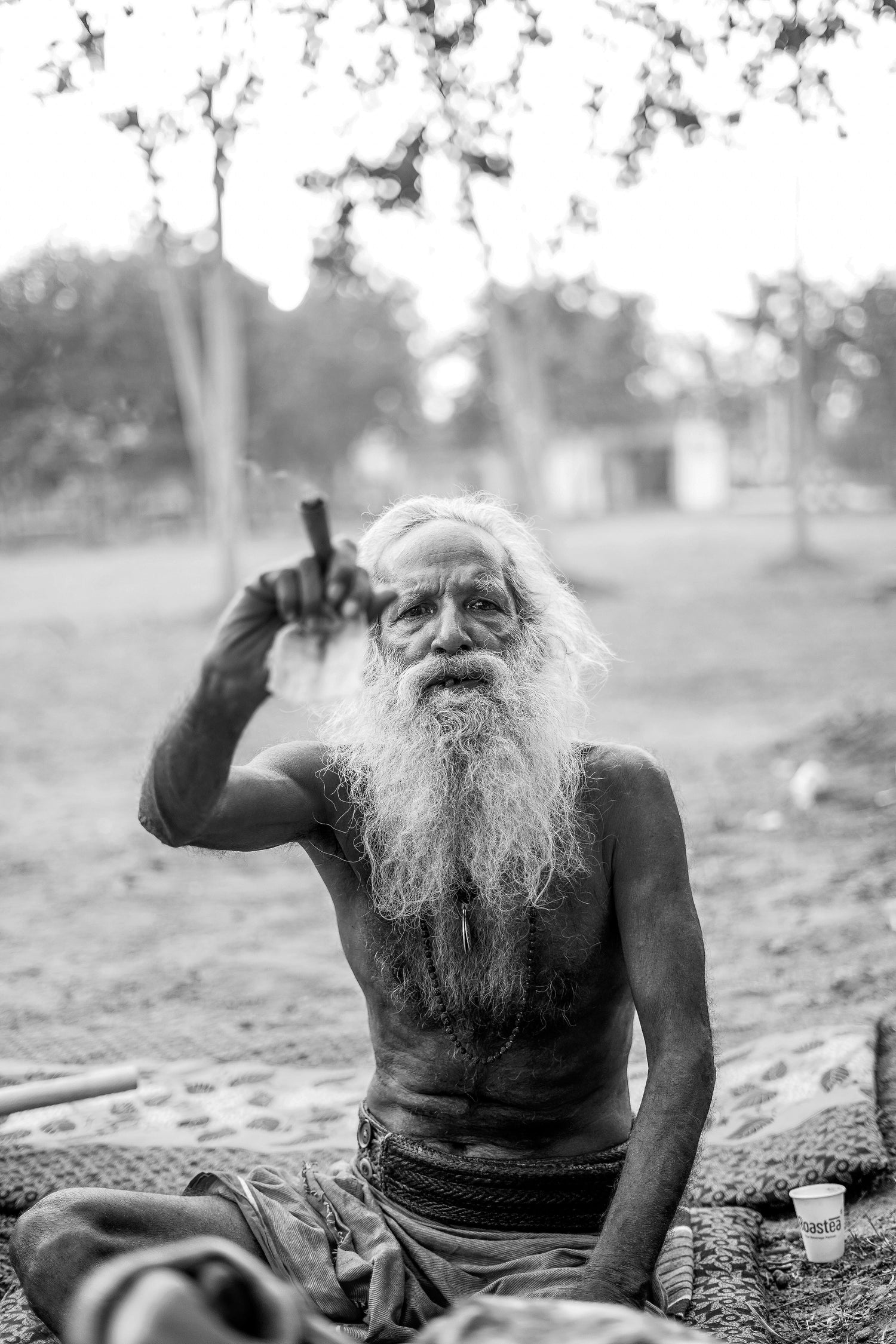
SWAMI SVATMARAMA (15th CENTURY): THE ARCHITECT OF HATHA YOGA
Swami Svatmarama occupies a central place in the history of yoga as the author of the Hatha Yoga Pradipika , one of the founding texts of Hatha Yoga . Few details are known about his life, but his work has left an indelible mark on the way yoga is practiced today. Through this treatise, Svatmarama made accessible a discipline previously reserved for ascetics and initiates, emphasizing the preparation of the body as a path to mental and spiritual transformation.
A practical approach to yoga
Unlike philosophical texts such as Patanjali's Yoga Sutras, Hatha Yoga Pradipika focuses on practical instructions aimed at strengthening and purifying the body, preparing it for deep meditation. The work is structured around four main chapters:
- Asanas : Physical postures designed to stabilize the body and strengthen vitality
- Pranayama : Breath control techniques, including the famous alternate nostril breathing (Nadi Shodhana) , to harmonize vital energies
- Mudras and Bandhas : Symbolic Gestures and Muscle Contractions to Control Inner Energy
- Shatkarmas : Purification techniques aimed at eliminating physical and mental toxins
Svatmarama considers the body as a sacred vehicle: by purifying and strengthening it, the yogi can access higher states of consciousness.
A philosophy accessible to all
One of Svatmarama's major contributions was to democratize the practice of yoga. Hatha Yoga Pradipika offers techniques suitable for beginners while offering advanced practices for experienced practitioners. Rather than focusing on mystical ideals, it emphasizes practical exercises, making yoga accessible to those seeking daily physical and mental well-being.
A living legacy
Today, nearly every style of physical yoga—from Vinyasa to Power Yoga —is directly or indirectly inspired by Swami Svatmarama's teachings. His vision of yoga balancing body, mind, and breath continues to influence millions of practitioners worldwide. Hatha Yoga Pradipika remains an essential reference for those wishing to understand the physical and energetic foundations of yoga.
His legacy transcends cultural boundaries, offering a path to personal transformation accessible to all, from novice to expert.
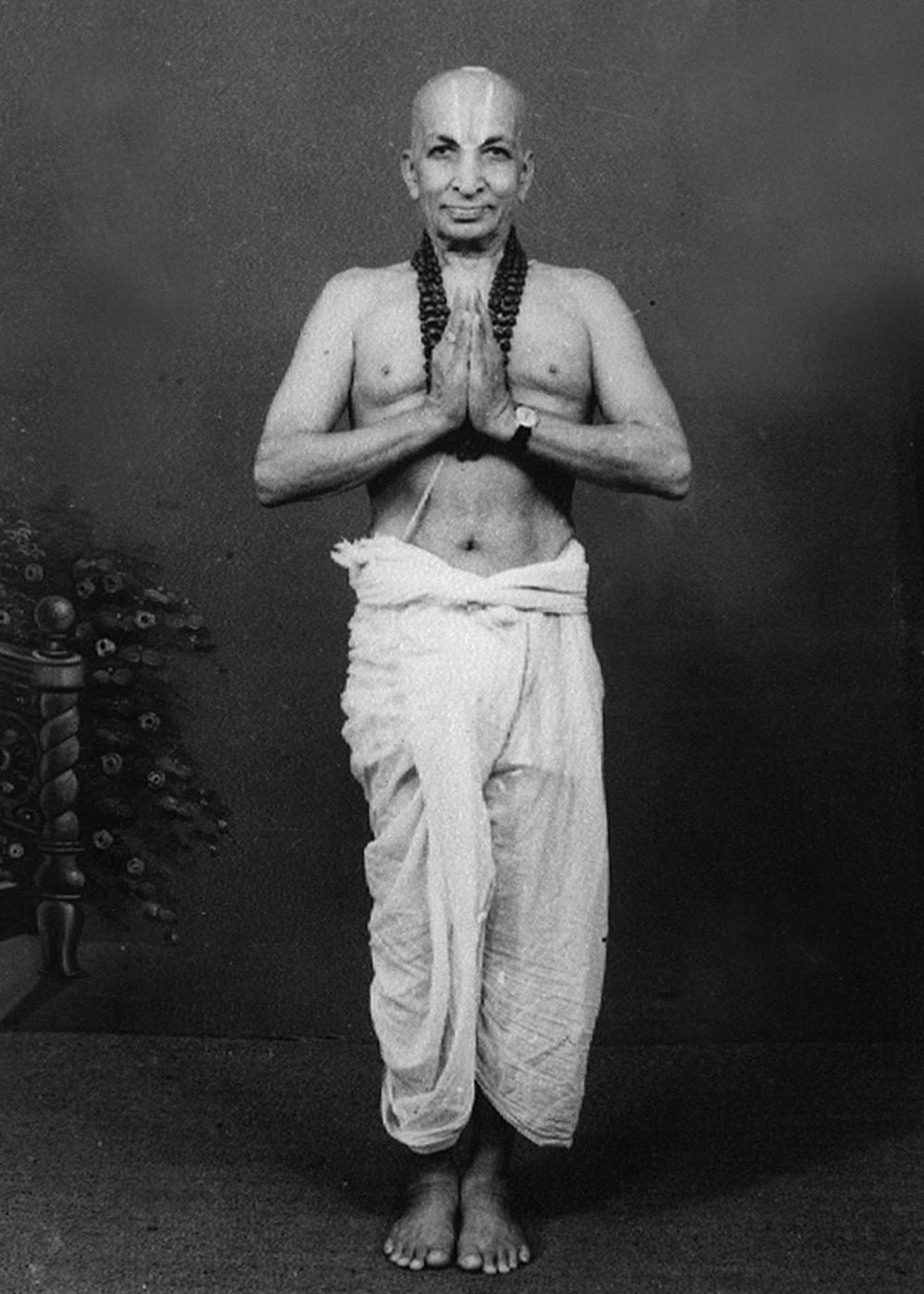
TIRUMALAI KRISHNAMACHARYA (1888-1989): THE FATHER OF MODERN YOGA
Tirumalai Krishnamacharya is often considered the architect of contemporary yoga. Born in South India, he was not only a master yogi, but also a philosophical scholar, an Ayurvedic healer, and a visionary teacher. His teachings have shaped the way yoga is practiced today, adapting to modern needs while respecting ancient traditions.
A bridge between tradition and modernity
Krishnamacharya studied with the greatest masters of his time, notably in Tibet, where he delved into the teachings of ancient texts such as the Yoga Sutras of Patanjali . He developed an innovative approach that combined:
- Physical discipline through asanas (postures)
- Pranayama , the mastery of breath, to balance vital energy
- Meditation and philosophical teachings to develop the mind and concentration
This integral approach aimed to harmonize body, mind and breath, adapting each practice to the individual abilities of the practitioner.
The master of masters
Krishnamacharya's impact is not only measured by his own teachings, but also through his students, each of whom left a profound imprint on modern yoga:
- BKS Iyengar , creator of Iyengar yoga, focused on alignment and props
- Pattabhi Jois , founder of Ashtanga Yoga, a dynamic and fluid method
- Indra Devi , the first Western woman trained in yoga, who contributed to its worldwide spread
Each student transmitted Krishnamacharya's teachings in a unique way, adapting its fundamental principles to different audiences and cultural contexts.
A personalized approach to yoga
What distinguishes Krishnamacharya is his insistence on adapting yoga to each individual. His method, now known as Viniyoga , emphasizes:
- A personalized practice, adapted to the age, physical condition and needs of the practitioner
- The importance of conscious breathing to support every movement
- Integrating Meditation and Yogic Philosophy into Daily Life
A timeless heritage
Krishnamacharya's teachings continue to inspire millions of practitioners and teachers around the world. He preserved the spiritual essence of yoga while modernizing its practice, making it accessible to a wide audience.
His legacy lives on in every contemporary yoga class, whether it's a dynamic Vinyasa class, a gentle therapeutic practice, or a deep meditation. Krishnamacharya remains a founding figure whose teachings shaped yoga as we know it today.

BKS IYENGAR (1918-2014): THE MASTER OF ALIGNMENT AND PRECISION
Bellur Krishnamachar Sundararaja Iyengar , better known as BKS Iyengar , is one of the most influential yoga teachers of the 20th century. A student of Tirumalai Krishnamacharya , he revolutionized the practice of modern yoga by introducing a rigorous approach focused on precision, alignment, and adaptability.
A method based on body alignment
Iyengar developed a unique style of yoga, now called Iyengar Yoga , based on precise principles of alignment and control of the body through postures (asanas) held for extended periods. His method is characterized by:
- Precise Alignment : Each posture is executed with care to avoid injury and optimize physical and mental benefits.
- The use of props : Blocks, straps, blankets and chairs allow practitioners of all levels to achieve postures correctly and safely.
- Holding the postures : Holding asanas for longer develops concentration, endurance and promotes deep relaxation of the body and mind.
This approach makes the practice of yoga accessible to those with physical limitations or injuries, offering a therapeutic dimension to the discipline.
An inspiring personal journey
Having suffered from chronic illnesses throughout his childhood, Iyengar discovered yoga as a way to strengthen his body and improve his overall health. His personal challenges shaped his approach, which focuses on physical care and mental discipline.
His major work, "Light on Yoga" (1966), is today considered an essential reference. This book, translated into many languages, helped popularize yoga throughout the world.
A world heritage
BKS Iyengar has trained thousands of teachers and opened schools in over 70 countries. His rigorous teachings continue to influence practitioners and teachers alike, emphasizing the importance of body awareness and precision in every movement.
He was also one of the first to demonstrate the therapeutic benefits of yoga for people suffering from chronic pain, respiratory disorders or heart disease.
Today, Iyengar Yoga remains one of the most widely practiced styles worldwide, valued for its structure, rigor, and adaptability to all levels. BKS Iyengar's legacy continues to inspire practitioners to explore their bodies with discipline, precision, and respect.
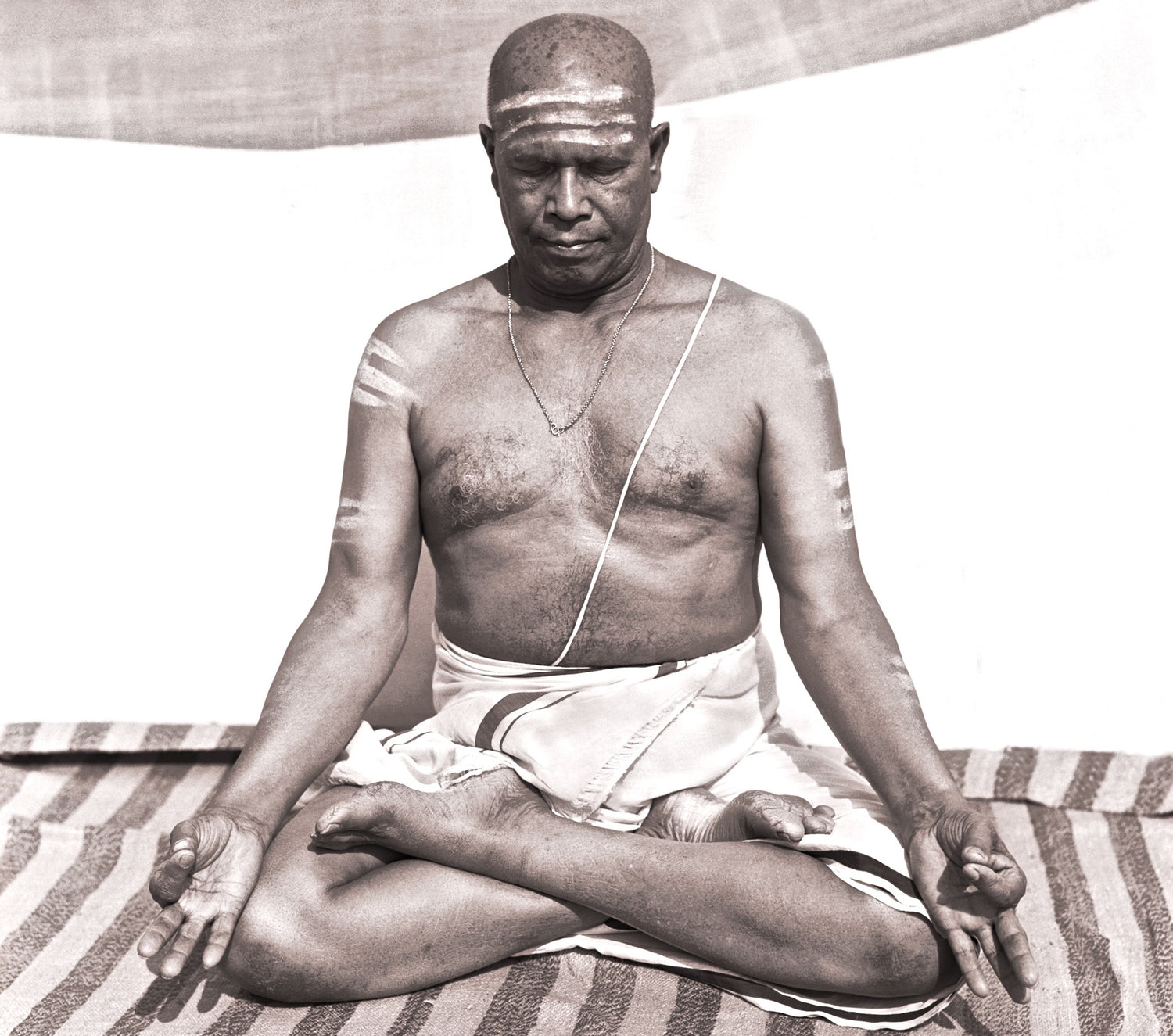
PATTABHI JOIS (1915-2009): THE FATHER OF DYNAMIC ASHTANGA YOGA
Sri Krishna Pattabhi Jois is recognized as the founder of Ashtanga Yoga , a physically demanding, dynamic, and fluid practice that has profoundly influenced many modern styles, including Vinyasa and Power Yoga . A student of Tirumalai Krishnamacharya , he modernized and disseminated an approach to yoga that combines strength, flexibility, and inner discipline.
A structured and energetic method
Ashtanga Yoga is based on a series of postures performed in a specific order, synchronized with breathing (pranayama) and specific points of concentration (drishti). This intense practice aims to create a continuous flow of movement , or vinyasa , promoting both mental focus and physical strengthening.
The main characteristics of his method are:
- Fixed sets : Each student begins with the primary set and then progresses to more advanced sequences as their strength and flexibility increase.
- The importance of breathing (ujjayi) : Each movement is synchronized with deep, controlled breathing, creating a connection between body and mind.
- Personal discipline : Ashtanga encourages regular, often daily, practice to develop both mental strength and physical resilience.
A master with universal teachings
Born in Karnataka, India, Jois was introduced to the practice of yoga by Krishnamacharya at a young age. Beginning in the 1960s, he began teaching Western students, contributing to the worldwide popularity of yoga.
Influential figures such as Sharath Jois (his grandson) and teachers such as David Swenson and Richard Freeman have continued his tradition, spreading the teachings of Ashtanga Yoga throughout the world.
A legacy of rigor and discipline
Jois's approach has helped to establish a style of yoga that is demanding, yet deeply meditative in its regularity and rigor. Today, his method attracts athletes, dancers, and those seeking an intense physical challenge while also seeking mental balance.
Pattabhi Jois's legacy lives on in every yoga studio where intensity rhymes with inner discipline. Ashtanga Yoga continues to inspire a generation of practitioners passionate about self-improvement, life force energy, and the quest for inner mastery.

PARAMAHANSA YOGANANDA (1893-1952): THE MESSENGER OF YOGA IN THE WEST
Paramahansa Yogananda was one of the first Indian spiritual teachers to introduce yoga and meditation to the West. Author of the famous book "Autobiography of a Yogi" (1946), he paved the way for a deeper understanding of yoga as a universal spiritual practice, far beyond physical postures.
A bridge between East and West
Born in India, Yogananda grew up in a deeply spiritual family. From an early age, he studied the teachings of Kriya Yoga , an advanced meditation technique designed to accelerate spiritual evolution by controlling the life force (prana).
In 1920, he left India for the United States and founded the Self-Realization Fellowship (SRF), an organization dedicated to spreading the teachings of yoga, meditation, and universal spiritual values.
Yogananda's Key Teachings
Unlike the physical approaches to yoga popularized by other masters, Yogananda emphasized meditation, self-realization, and union with the divine. His main teachings include:
- Kriya Yoga : An advanced breathing technique to calm the mind, increase life energy, and accelerate spiritual awakening.
- Harmony between science and spirituality : He highlighted the links between modern physics, meditation and ancient Indian philosophies.
- The Universality of Yoga : Yogananda taught that yoga was not limited to a religion, but was a universal path to inner realization, accessible to all.
A global spiritual impact
His book, "Autobiography of a Yogi," has become a cult classic, read by millions of people, including figures such as Steve Jobs and George Harrison . This text played a key role in popularizing spiritual yoga in the West, opening the doors to a deeper vision of meditation and personal development.
A timeless heritage
Yogananda's teachings continue to influence millions of practitioners worldwide through Self-Realization Fellowship . His approach to yoga as a path to inner peace and universal harmony remains a profound inspiration to all those seeking to explore the spiritual potential of yoga.
His legacy, centered on meditation and self-realization, transcends cultural boundaries and remains a major pillar of modern spiritual yoga.
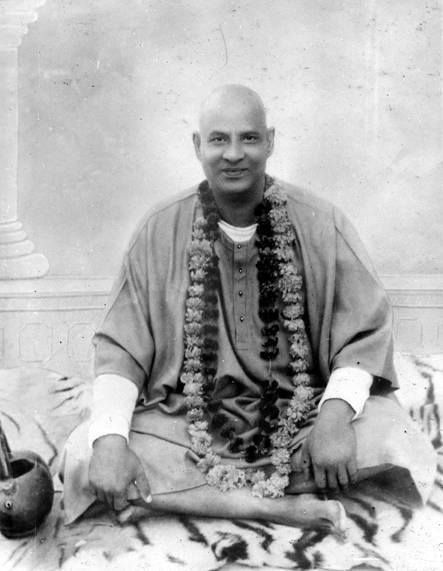
SWAMI SIVANANDA (1887-1963): THE MASTER OF SIMPLICITY AND SERVICE
Swami Sivananda is one of the most respected yoga teachers of the 20th century. A physician by training, he dedicated his life to teaching yoga and selfless service (seva). His simple and accessible approach to yoga has made the practice universal, suitable for everyone, regardless of age or experience level.
A journey in the service of others
After working as a doctor in Malaysia, Sivananda gave up his career to pursue the spiritual path in India. In 1936, he founded the Divine Life Society , an organization dedicated to the dissemination of spiritual teachings and humanitarian aid.
His teachings are based on the principle of "Serve, Love, Give, Purify, Meditate, Realize" , encouraging a balance between spiritual practice and service to others.
The Pillars of Sivananda Yoga
Sivananda developed a comprehensive and accessible system of yoga, known today as Sivananda Yoga , based on five principles:
- Physical exercises (asanas) : To strengthen the body and keep it healthy.
- Controlled breathing (pranayama) : To revitalize the body and calm the mind.
- Relaxation (savasana) : To eliminate physical and mental tension.
- Healthy Eating : A vegetarian diet that promotes physical and mental well-being.
- Positive thinking and meditation : To cultivate inner harmony.
A universal spiritual heritage
Swami Sivananda wrote over 200 books on yoga, spirituality, and health. His disciples, such as Swami Vishnudevananda , spread his teachings worldwide, including through the opening of Sivananda Yoga centers in the West.
His message of compassion, discipline, and simplicity continues to inspire millions of people around the world. Sivananda's holistic approach is now one of the most popular styles of yoga, combining physical well-being, inner peace, and spiritual development.
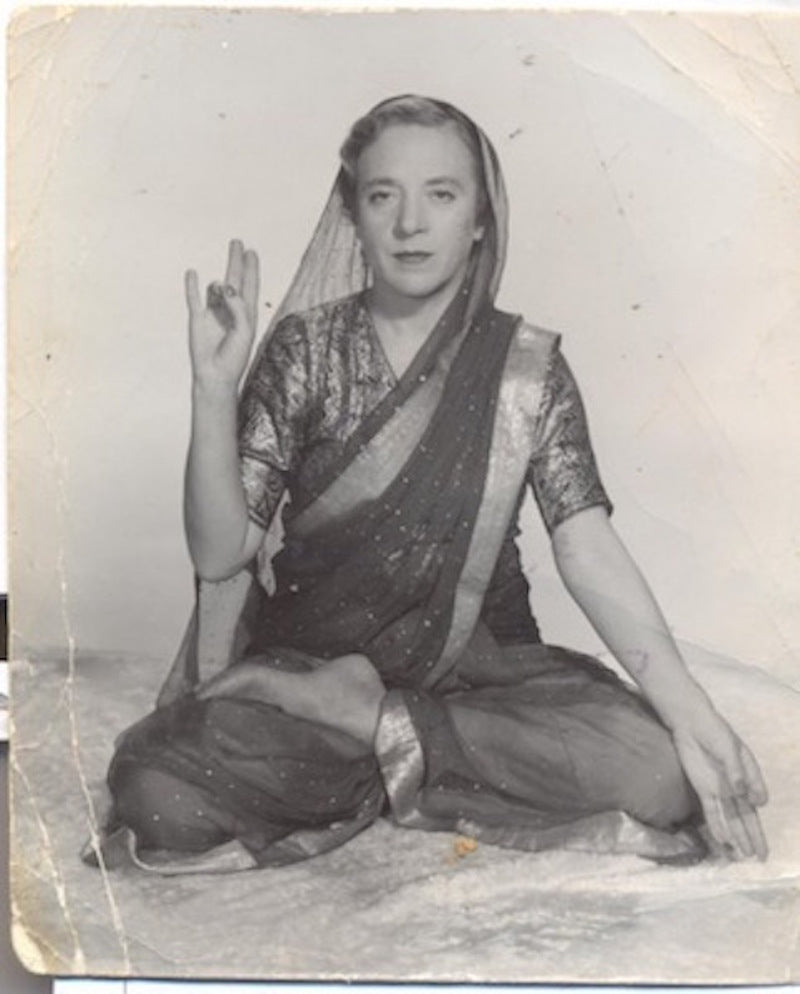
INDRA DEVI (1899-2002): THE FIRST LADY OF YOGA
Indra Devi , nicknamed the "First Lady of Yoga" , is one of the most influential figures in the spread of yoga in the West. Born in Latvia as Eugenie Peterson , she was one of the first non-Indian women to be initiated into the teachings of yoga by Tirumalai Krishnamacharya , a remarkable feat at a time when the discipline was still primarily reserved for men.
A Western pioneer in India
After moving to India in the 1920s, Indra Devi became fascinated by Indian culture and eventually convinced Krishnamacharya to accept her as a student. She learned the traditional techniques of Hatha Yoga , as well as the principles of breathing (pranayama) and meditation.
Her unique journey has allowed her to become an ambassador for yoga, breaking down cultural barriers and demonstrating that this ancient practice can benefit everyone, regardless of gender, culture or physical condition.
The introduction of yoga in the West
In the 1940s, Indra Devi moved to the United States, where she opened the first yoga studio in Hollywood. Her gentler method, adapted to Western needs, quickly attracted celebrities such as Marilyn Monroe , Greta Garbo , and Elizabeth Arden .
She has made yoga accessible to a wide audience, presenting it as a practice of physical and mental well-being, rather than as a strict spiritual discipline.
A gentle and universal approach
Indra Devi advocated an effortless yoga, focused on:
- Deep relaxation : Each posture should be performed without excessive tension, respecting the body's limits.
- Conscious breathing : She emphasized controlling the breath to calm the mind and balance emotions.
- Adaptability : She encouraged students to adapt their practice according to their physical and emotional needs.
A world heritage
Her influence helped popularize yoga in Western circles, particularly among women, at a time when the practice was still dominated by men.
Today, Indra Devi's compassionate approach continues to inspire practitioners around the world, emphasizing gentleness, breathing, and inner balance.
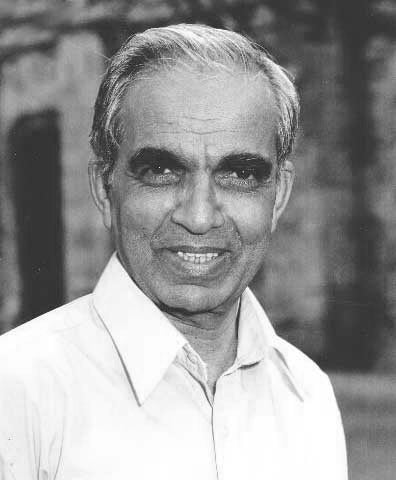
TKV DESIKACHAR (1938-2016): THE ART OF PERSONALIZED YOGA
Tirumalai Krishnamacharya Venkata Desikachar , son of the renowned master Tirumalai Krishnamacharya , is credited with developing an individual-centered approach to yoga. The founder of Viniyoga , he advocated that yoga should be tailored to the specific needs of each practitioner, based on their age, health, and lifestyle.
A family heritage transformed into modern education
Although Desikachar initially pursued a career in engineering, he eventually devoted himself entirely to teaching yoga under the guidance of his father. Unlike the more rigid approaches of his contemporaries, Desikachar favored a progressive method that respected the abilities of each student.
He founded the Krishnamacharya Yoga Mandiram in Chennai, India, a center dedicated to the therapeutic teaching of yoga, where he continued to spread his father's teachings in a modernized and accessible form.
The Foundations of Viniyoga
Viniyoga is an individualized approach to yoga, focused on adaptability of practice. Its key principles are:
- Adaptation to personal needs : Each posture (asana) and breathing exercise (pranayama) is adjusted according to the physical, mental and emotional state of the practitioner.
- Gradual progression : The intensity of the exercises increases at the practitioner's pace, without forcing postures or breathing.
- Integrating Meditation : The importance of mental concentration (dharana) and meditation (dhyana) to balance body and mind.
A therapeutic approach to yoga
Desikachar also contributed to the recognition of yoga as an effective therapeutic tool, particularly for:
- Relieve stress and anxiety
- Improving breathing in people with respiratory disorders
- Strengthening mobility in the elderly or in rehabilitation
His teachings have influenced many health and wellness professionals, integrating yoga into complementary medical treatments.
A living legacy
Desikachar's writings, especially his seminal work "The Heart of Yoga," continue to be a reference for teachers and practitioners. His vision of yoga as a tool for personal transformation and adaptation to individual needs remains central to modern practices today.
His humanistic and caring approach has made yoga accessible to all, regardless of age, physical condition or experience.

SWAMI VIVEKANANDA (1863-1902): THE SPIRITUAL MISSIONARY
Swami Vivekananda occupies a central place in the history of modern yoga as a true ambassador of yoga in the West . Born in India as Narendranath Datta, he became one of the most brilliant disciples of Ramakrishna Paramahamsa , a Bengali mystic renowned for his teachings on the unity of religions and advaita vedanta (non-duality).
His spiritual journey was marked by a profound quest for truth and universality. After his master's death, Vivekananda founded the Ramakrishna Mission , an organization dedicated to the spread of spiritual teachings and social improvement through humanitarian and educational activities.
The introduction of yoga in the West
Vivekananda's true fame was cemented in 1893, when he delivered a resounding speech at the Parliament of Religions in Chicago. With his simple yet powerful words, he captivated his Western audience by extolling universal values of tolerance, unity, and spirituality. He thus became the first Indian master to introduce yoga to the United States, at a time when the practice was still relatively unknown outside India.
The spread of Raja Yoga
Swami Vivekananda placed particular emphasis on Raja Yoga , which he defined as the path to mastery of the mind . He drew on the Yoga Sutras of Patanjali to teach a structured method of meditation, mental discipline, and inner inquiry. His writings, such as the book "Raja Yoga" (published in 1896), helped popularize this practice in the West and make it accessible to a lay public.
A bridge between spiritual cultures
Beyond yoga, Vivekananda was a fervent advocate of interfaith dialogue and the values of tolerance. He encouraged exchanges between East and West, asserting that all religions share a common essence. His vision of yoga was not limited to physical postures, but embraced a holistic approach, aiming for spiritual awakening through meditation, selfless service (karma yoga), and devotion (bhakti yoga).
A timeless spiritual heritage
Even after his untimely death at the age of 39, Swami Vivekananda's influence remains immense. He inspired generations of thinkers, philosophers, and yoga practitioners, contributing to the emergence of a universal and humanistic yoga . Today, his teachings continue to be disseminated through the Ramakrishna Mission and his numerous works, which have been translated worldwide.
Swami Vivekananda not only transmitted spiritual practices, he awakened a worldwide awareness of the potential of yoga as a discipline for personal transformation and inner peace.
Thank you for this journey through the legendary figures of yoga, for their wisdom and their dedication.
HEALTHY MIND, HEALTHY LIFE
Valentine's Bio
-

VALENTINE
1994, Reunion Island, Mauritius, a Life carried by the Indian Ocean and Yoga
Since childhood, this intrepid traveler has traveled the globe, leaving her footprints on beaches around the world.Passionate about surfing, scuba diving and sailing, she has made the oceans her playground and source of inspiration.
The freedom of the waves, the serenity of the ocean depths and the wind in his sails have punctuated his journey, always guided by a quest for connection with nature.
It was through her explorations that yoga became more than a practice for her – it was a way of life.
Between early morning surf sessions and meditative sunsets, she found in yoga a perfect balance of strength, flow and self-awareness.
Today, she combines her passion for water sports with teaching yoga and is part of the Yogaterrae team, here in France, in the South West and often remotely :)
This adventurer is a true source of inspiration for anyone who aspires to live in harmony with their body and nature.
Through her stories of incredible experiences, she invites everyone to open up to a world where every wave, every breath and every posture is a celebration of life.



